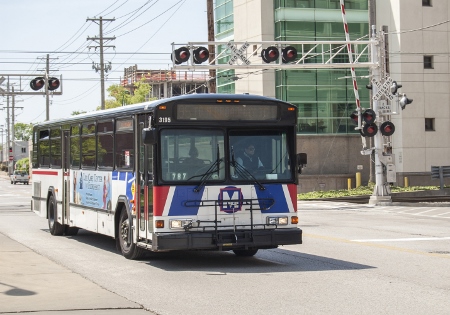The ability to maximize the life cycle of MetroBus vehicles and save millions of dollars in the process has attracted the interest of transit agencies around the nation and the world. This national and international reputation has led to a new distinction of being recognized by the Federal Transit Administration (FTA) as a model for transit asset management. Specifically highlighted by the FTA in the July 26 Federal Register was a case study of Metro transit’s industry-leading bus maintenance program and how it has been able to extend the lifespan of buses by 25 percent and decrease the rate of breakdowns by 85 percent, resulting in service reliability for the customer and substantial cost savings for the taxpayer. To learn more about Metro’s preventative bus maintenance program and transit asset management practices, other transit agencies have called, written or visited Metro transit in St. Louis with the hopes of modeling their bus maintenance and transit asset programs after Metro’s.
Executive Director of Metro Transit Ray Friem said, “This started out 15 years ago as a simple challenge to see what we could do to improve our industry-average bus maintenance results. With the amazing work of the Metro maintenance team and the management program we have perfected over the past 15 years, we are proud to be recognized as an industry leader. Our outstanding program allows us to provide the best possible service to our region while saving taxpayers money by keeping our costs significantly lower.”
Research, academic literature and external reviews from organizations like the U.S. Government Accountability Office emphasize many benefits of asset management programs for transit systems, including:
- Improved transparency and accountability
- Better service for passengers
- Potential safety benefits
- Overall life-cycle cost savings through optimized investment and maintenance decisions
- Increased effectiveness of maintenance and reduction in unplanned repairs
Starting on October 1, 2016, the FTA will require public transportation agencies to develop and implement asset management plans. Metro transit in St. Louis is well ahead of the game.
Two key aspects of Metro’s success are the close monitoring of each bus in the fleet and the proactive replacement of key components instead of waiting for them to fail. The average life cycle of a MetroBus is now 15 years and 825,000 miles traveled. The transit industry standard is 12 years and 600,000 miles traveled. Additionally, overall MetroBus reliability has increased substantially as the time between bus breakdowns has increased from 3,400 miles in 2000 to more than 22,000 miles today.
